  ® ®
|
How CV carburetors work |
|
The constant velocity carbburetor is mystifying even to the professional mechanic. Hopefully, this article will take some of the mystery out. |

|
History |
|
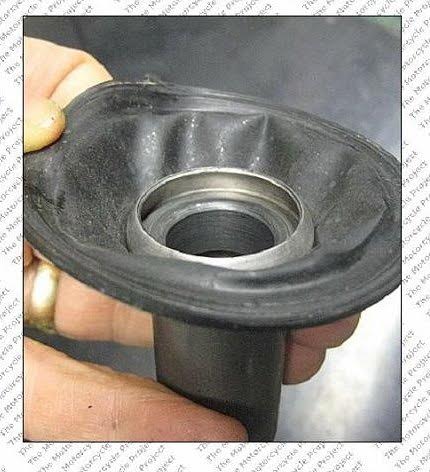
|
The rubber diaphragm type CV represented the genre early on but was later replaced by the labyrinth type, and later still the rubber diaphragm came back to dominate. The rubber diaphragm shown here is a very early one. It is not very stretchy. This early rubber diaphragm was prone to cracking and rupturing, which of course negatively affected engine performance. |
|
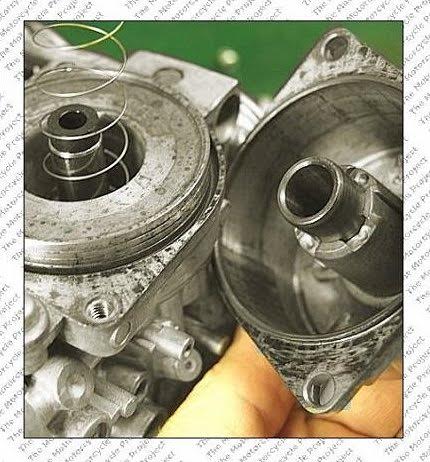
|
The labyrinth type uses a machined labyrinth seal instead of a diaphragm. It had its own issues, not the least of which was it collected dirt and grime around the labyrinth seal, and elsewhere, which affected its operation. |
|
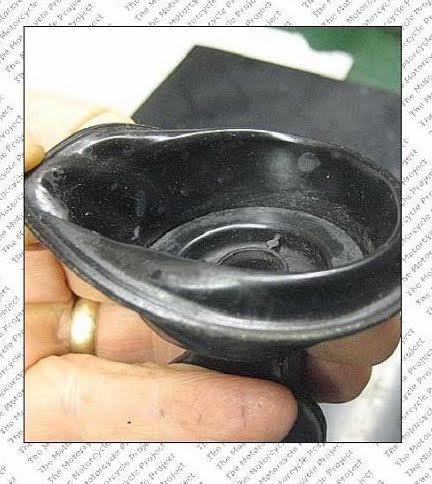
|
When he rubber diaphragm reemerged much later it was made of a superior material that did not rupture easily and was much more responsive. All of the Hondas and many other models benefitted from this revised design. |
|

|
Function |
|
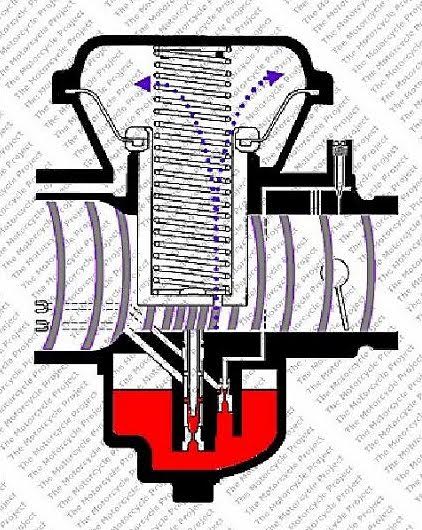
|
This low pressure has access through a hole in the bottom of the slide to the area above the slide's seal. Thus this upper chamber contains low pressure air. |
|

|
The chamber below the seal however, through vents in the carburetor body, maintains atmospheric pressure. Consequently there is an imbalance of pressures. |
|

|
The potential exists for the higher pressure to overcome the lower and the slide rise, should the imbalance get strong enough to overcome the weight of the slide and the force of the spring, if present. |
|

|
When the rider opens the throttle, the airflow through the carburetor increases, making the pressure in the carb drop, and the pressure above the slide also drops, and the slide begins to rise. |
|
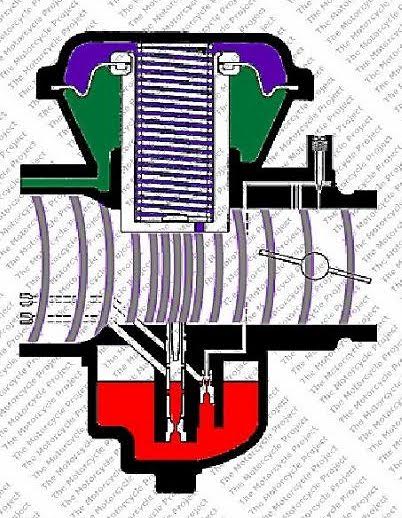
|
Still more throttle and the slide will rise yet more. Remember there is no mechanical connection between the throttle grip and the slide, though there is one between the throttle grip and the carburetor throttle plate (butterfly). |
|
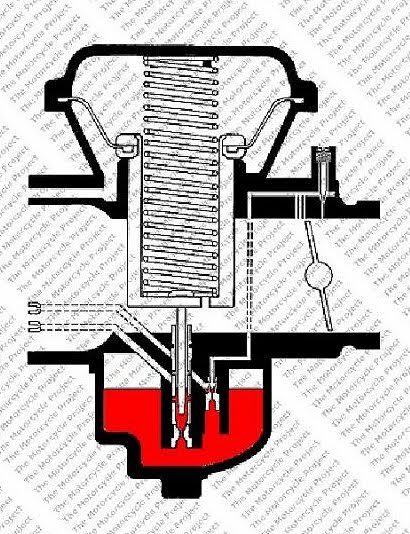
|
This then is how the CV slide lifts. When the throttle is closed, there is no slide movement. |
|

|
When the throttle is opened, the slide lifts. |
|
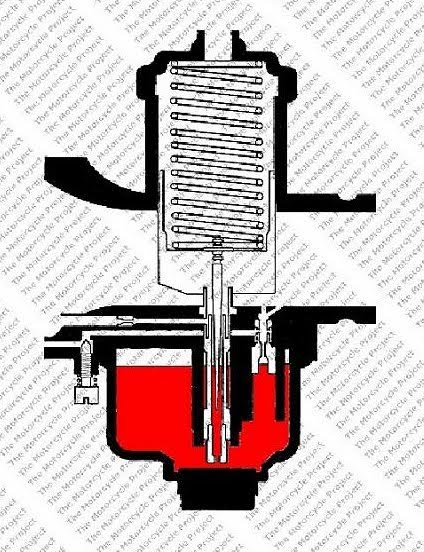
|
Purpose |
|
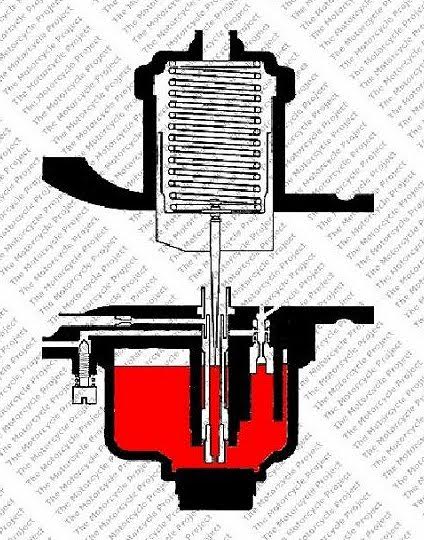
|
Consequently, when the throttle is opened, the slide rises, because the slide is the throttle. The problem with this is, each time the slide rises there is an air pocket underneath it that has to adjust its pressure and this causes a momentarily weak fuel discharge signal, resulting in engine hesitation. |
|
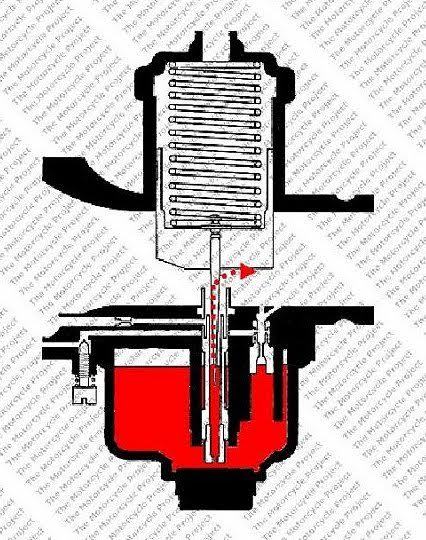
|
And when the throttle is lowered again, the reverse happens. The signal is momentarily too strong and too much fuel is discharged. The wholly mechanical slide type carb is prone to this kind of fuel delivery. |
|
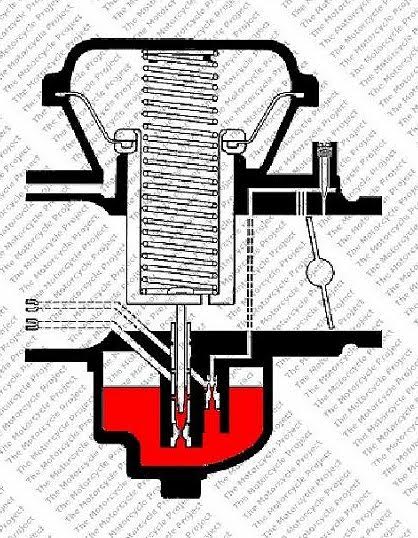
|
The CV carb solves this by not allowing the slide to rise when the throttle is deployed until the pressure drop has stabilized. In this way, that area beneath the slide where the fuel discharge tubes reside is kept at an optimum and more importantly a consistent negative pressure. Most CV carbs don't in fact lift their slides until the throttle is at least 1/4 opened. Meaning, the CV carb is two carburetors in one. At low throttle openings it acts like a fixed venturi carburetor... |
|
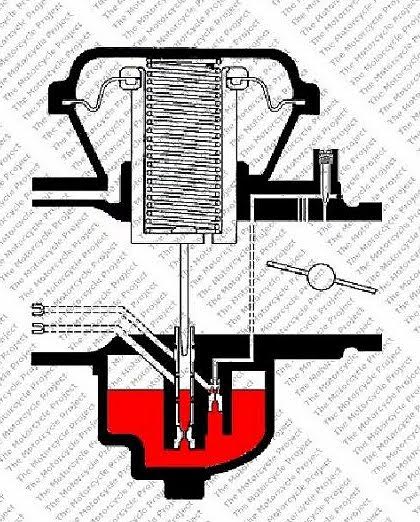
|
...and at higher ones it acts like a variable venturi carburetor. The result is that the rider can never over-thottle this carburetor. Because the carburetor carefully matches throttle to airflow, it is never caught not ready to immediately discharge fuel. The very best CVs perform almost like fuel injection in effect. |
|

|
Misconceptions |
|
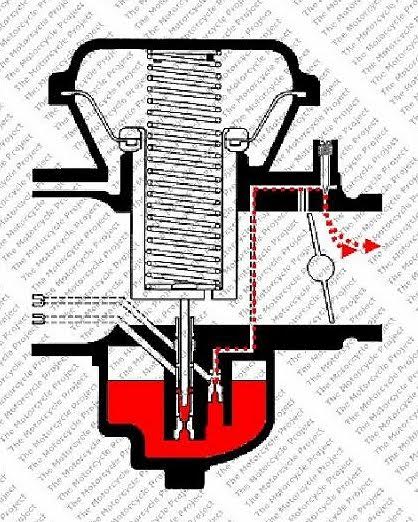
|
Circuits |
|
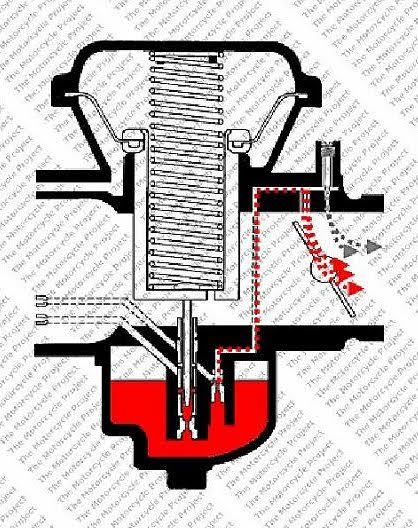
|
As soon as the throttle is opened, similar ports near the idle port are exposed and they discharge also. These are transitional fuel outlets. They transition between the idle and the next circuit, the needle jet. |
|
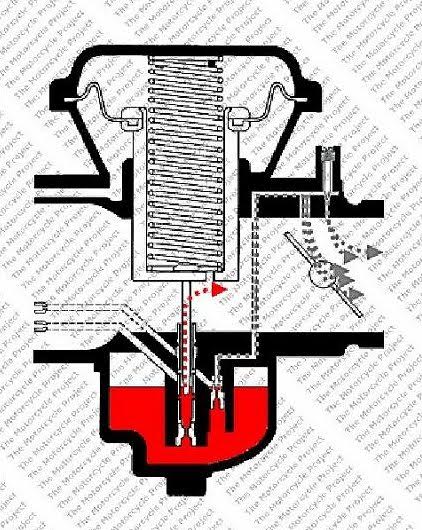
|
When the throttle is opened enough to create a signal strong enough, the slide lifts and the needle jet in the center of the carb bore is exposed, and fuel exits there also. Note that the idle and transition ports continue to discharge. |
|
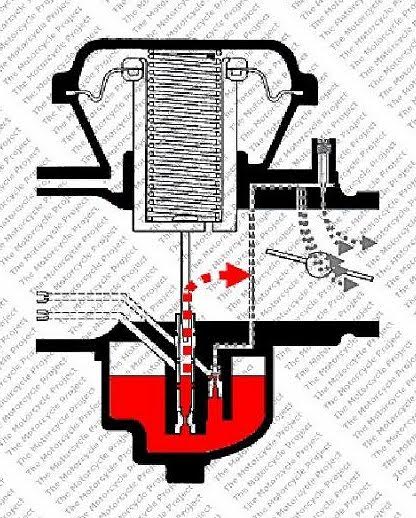
|
Finally, when the throttle is opened all the way, and the slide rises even further, note that the jet needle is so far out of the needle jet that the final restriction to fuel flow is the main jet, and now it is flowing full-force. All of these circuits add together. |
|

|
Altitude |
|
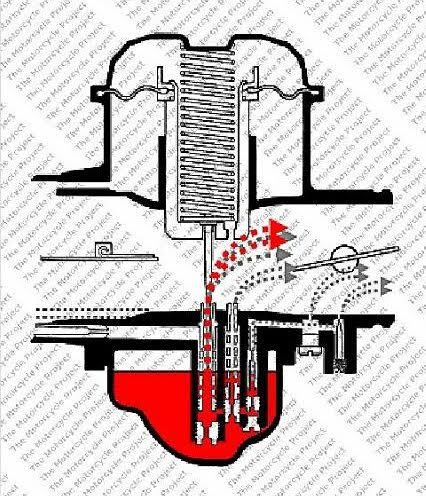
|
3-Jet CVs |
|
Email me © 1996-2024 Mike Nixon |